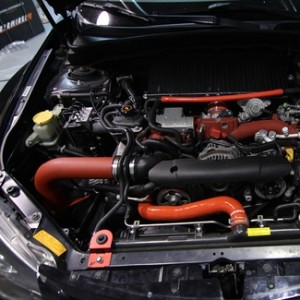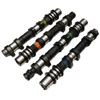STi Air Intake Install How To Guide


The air intake system is like your STi’s nose. Every now and then, it needs to be cleared out. Don’t blow though! An aftermarket STi air intake will undeniably do the trick. It will open up the car’s airways. Your STi will surely thank you with a significant increase in overall performance. So yeah, if you haven’t gotten an aftermarket STi air intake, then you should get one! If you happen to have already purchased one and are ready to install it, but don’t know how, then fear not any further. You will, however, need some tools other than what’s included in the installation kit. A full tool kit that includes socket wrenches and extensions should do, along with torque wrench and a set of pliers. Never know when the pliers can come in handy =). Also, wearing a pair of rubber gloves or protective handwear never hurts. This product’s for a 2008-2014 STi.
We’ll be using the intake system by AEM Performance Technology as an example for this installation guide. The air intake install may be similar to that of whichever new intake system you got. Something important to note is whatever parts, fasteners, etc that you remove during the installation are to be set aside and kept. You might need them at a later time. This is regardless of whatever brand your intake system is from.
1. Ensure that the car’s completely turned off, with the key out of the ignition, and make sure that the parking brake’s applied. If you’ve driven your car within the last 2 hours, then allow up to 1 hour for the engine to cool before proceeding.
2. Carefully disconnect the negative battery terminal.
3. Now, to get to work. Under the hood, uninstall the fresh air inlet duct via two plastic clips.
4. Locate the stock air box and the mounting bracket that’s retaining it. Loosen the nut that’s holding the mounting bracket to the air box. Don’t remove the nut! There should be two other nuts that are somewhat side-by-side of one another on the stock air box. Undo both of them and remove.
5. There’s another nut that’s retaining the bottom of the stock air box. Undo it.
6. Locate the mass air flow sensor wire harness and unplug it. Remove the mass air flow sensor by undoing and removing two screws.
7. Locate the hose clamp that’s helping retain the stock air box inlet to the compressor inlet tube. Loosen it. Then, undo the clips on the air box and remove the back half of the air box assembly.
8. Take out the remaining half of the stock air box and remove the headlight access cover. This can be done by twisting it counter-clockwise. Righty tighty, lefty loosey!
9. Time to begin working on installing that new air intake. Start by taking the rubber edge trim that’s included in the air intake installation kit and installing it onto the heat shield that’s also included in the install kit.
10. Now, take the 13” edge trim (included in the new air intake install kit) and install it to the left side of the heat shield. Take the 15.5” edge trim and install that to the top right side of the same heat shield afterwards.
11. Take an M6 rubber mount and install it onto the new heat shield. Retain it using the M6 nut that’s included in the kit.
12. Take the mass air flow sensor and insert it into the AEM intake pipe using the two M4 bolts that came with the kit. Afterwards, take the pipe assembly and insert it ithrough the inlet hole of the new heat shield.
13. Slide the new air filter and the #48 hose clamp onto the new intake pipe’s end. Ensure that the air filter is slid on far enough til’ the pipe stop is hit within the pipe. Ensure that the hose clamp is adequately tight.
14. Take the silicone coupler and two (2) #44 hose clamps. Install these parts to the new intake pipe. Don’t tighten the clamps all the way!
15. With care, handle and position the intake pipe assembly. Make sure that the intake pipe’s slotted bracket is situated on the rubber mount stud.
16. Take the silicone coupler and slide it on the compressor inlet pipe. Install the hose clamps and make sure that they’re adequately tight.
17. Using an M6 nut that’s included in the kit, and two factory ones, install and retain the new heat shield assembly. Make sure that they’re all nice n’ tight. Install the inlet pipe to the rubber mount afterwards, using the fender washer that’s included in the install kit and an M6 nut. Don’t tighten completely!
18. Line up the intake pipe so that it’s centered with the inlet hole of the heat shield. Tighten the nut so that the rubber mount assembly is retained well.
19. Handle the intake pipe. Position it and maintain the position of the intake pipe while tightening the final hose clamp onto the silicone coupler.
20. Replace the headlight access cover and have the mass air flow sensor wiring harness routed under the intake pipe. Then, retain it to the mass air flow sensor. Using the included tree push-mount zip tie, retain the mass air flow sensor wiring to the bracket of the intake pipe.
21. Make sure that none of the parts are in contact with one another. Pipes shouldn’t come into contact with any part of the car. Adjust any pipes if necessary for proper clearance under the hood.
22. Double-check all fasteners to ensure that they’re tightened well. This includes the rubber mount (if it applies to you) and hose clamps. The kit comes with a CARB sticker. Place it underneath the hood.
23. Reconnect the negative battery terminal and start him/her up! Allow the car to run for a few minutes. Stick around and check for any abnormalities.
















